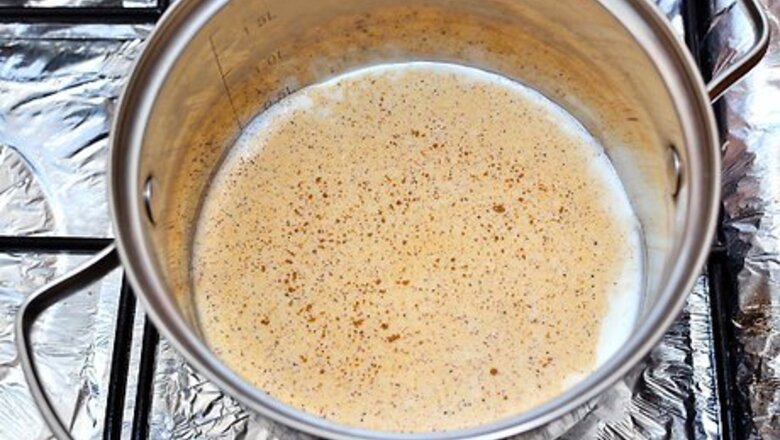
views
Making Simple Eggnog

Create the milk mixture. In a large saucepan, combine the milk, nutmeg, cinnamon, and vanilla. Cook on medium low heat until the mixture comes to a low boil, stirring occasionally. Failing to stir the milk mixture as it boils can cause it to burn and stick to the bottom of the pan, which may ruin the taste of your eggnog.
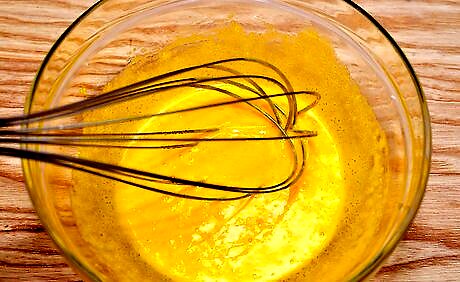
Make the egg mixture. In a large bowl, combine the egg yolks and the sugar, and beat or whisk until fluffy. If using an electric beater, beat the egg mixture on low speed for one or two minutes.
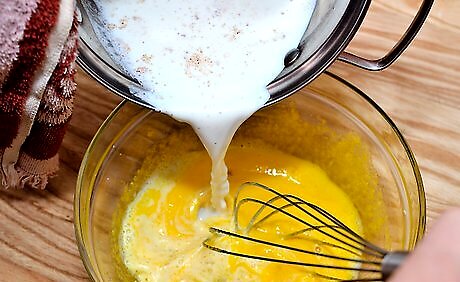
Add the milk mixture slowly to the egg mixture and cook. Whisk the milk mixture into the room temperature egg mixture until the ingredients are well incorporated. Pour the combined mixture back into the saucepan. Cook it over medium heat until it becomes thick, which takes about three to five minutes. Eggs must be tempered, which means it's important to add the milk mixture gradually to the room temperature egg mixture. Combining them too quickly or adding the eggs directly to the hot saucepan can cause the eggs to curdle and ruin the eggnog.
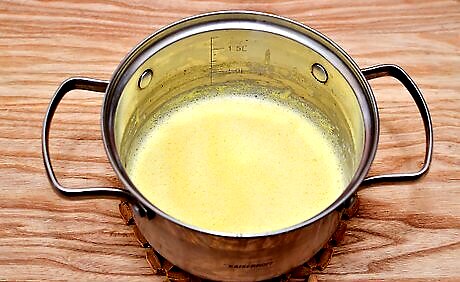
Remove the eggnog from the burner. Let it cool at room temperature for about an hour or two, or until the mixture itself reaches room temperature
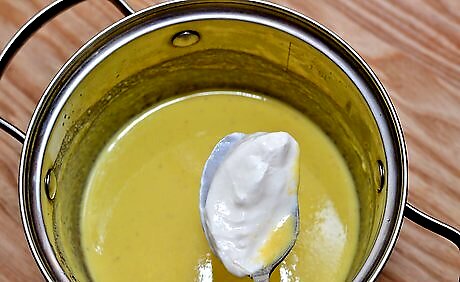
Add the remaining the ingredients. Stir in the cream and rum or brandy. Mix the eggnog well. Feel free to skip the rum/brandy for a non-alcoholic version. However, keep in mind that non-alcoholic eggnog will spoil faster, so don't store it for too long before you drink it.
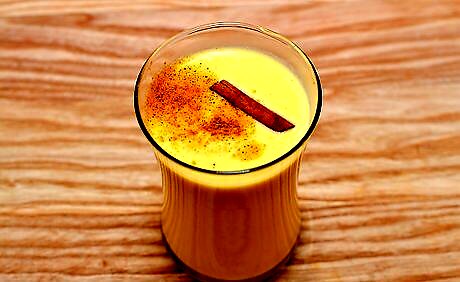
Cover the eggnog tightly with plastic wrap. Refrigerate it overnight to let the flavors combine, and serve with grated nutmeg and a cinnamon stick garnish. The eggnog is best if enjoyed within several days. Refrigerate unused portions and toss it after a week or if the eggnog develops a foul odor.
Making Traditional Eggnog
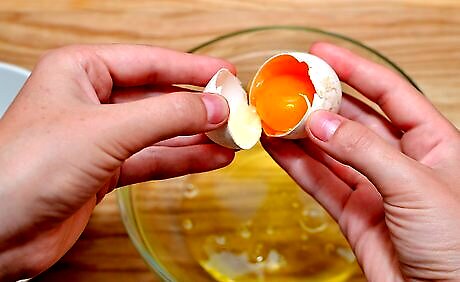
Separate the egg whites from the yolks. Crack each egg in half over a bowl and gently transfer the yolk from shell to shell, letting the white drop into the bowl. Transfer the remaining yolks to a separate medium mixing bowl. It's a good idea to separate the whites from one egg into a small bowl and, if the separation is a success (no yolk gets in), pour the whites from that egg into the large bowl. Repeat this process for each egg to minimize the risk of adding unseparated yolks or shell fragments to the main mixing bowl. If you get yolk in the whites, save that egg for breakfast: whites will not whip when contaminated with egg yolk.

Beat the egg whites and sugar. Using an electric beater set on medium speed, beat the egg whites until they turn white and frothy. Add half the sugar and beat just until soft peaks begin to form. You can technically use a whisk instead of an electric beater, but the process will take more time and energy. "Soft peaks" should just begin to hold their form when you remove the mixer, but they'll melt back into the whites after a second or two.
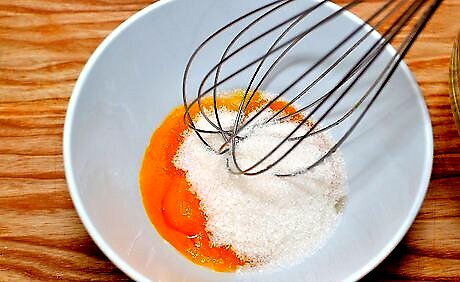
Mix the egg yolks with sugar. Mix the remaining half of the sugar into the egg yolks in a separate bowl. Beat the mixture with a whisk until it is well blended.
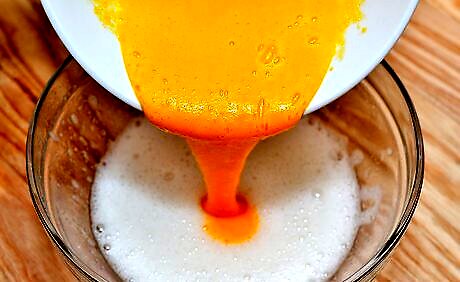
Combine the egg mixtures. Gently fold the egg yolks into the beaten egg whites using a spatula, pouring slowly. The goal is to keep the fluffiness of the whites, which means you can stir too quickly or press too hard.
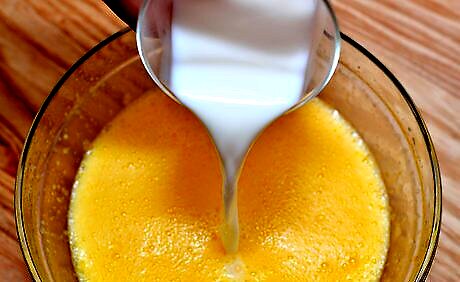
Add the rum, milk and half of the cream. Slowly pour the rum into the egg mixture, gently folding it in with your spatula. If you're serving the eggnog to children or prefer non-alcoholic eggnog, you can leave out the alcohol. Next, add the milk and half of the cream slowly to the bowl, gently stirring them in. Start with 4 cups (1 L) of milk, then add more later to adjust the consistency. If you're adding alcohol, you may not need any more milk. Some cooks recommend heating the milk and cream before adding to the egg mixture to help thicken and slightly cook the eggs. If you're worried about eating raw eggs, follow this step. Taste the eggnog and decide whether to add more alcohol. For thicker eggnog, reduce the amount of milk by half.

Whip the eggnog. Beat the reserved half of the cream in another medium bowl until nearly stiff, then gently fold the whipped cream into the mixture. Transfer the finished eggnog to a large punch bowl for serving. Stiff peaks should be firm and should not collapse into themselves when you pull away the mixer.
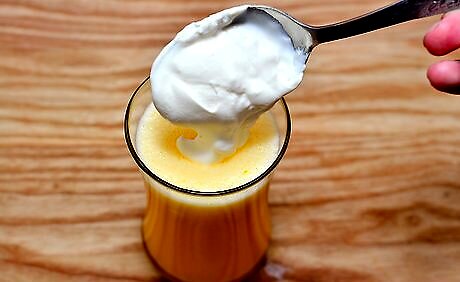
Serve in clear glasses and top with whipped cream. Grate or sprinkle some nutmeg on top for a pretty touch. You can safely save leftovers in a sealed dish in the refrigerator for a few days or up to one week.
Making Light Iced Eggnog
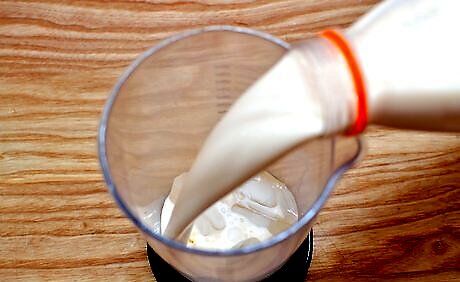
Blend the milk and ice. Fill the blender half full with ice cubes. Pour in the almond milk. Blend the milk with the ice until it becomes smooth and frothy. Almond milk makes this version of eggnog appropriate for lactose intolerant guests. If desired, you could swap the almond milk for soy milk, dairy milk, or other nut milks for a slight twist.
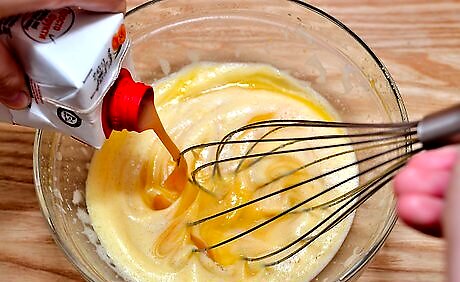
Mix the eggs, agave nectar and cinnamon. In a separate bowl, mix the eggs and the agave nectar with a whisk, making sure they are well incorporated. Stir in the cinnamon. Since you won't be able to heat this recipe, it's crucial to use pasteurized eggs to reduce the risk of foodborne illness.
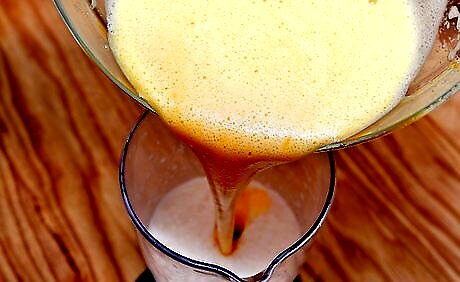
Blend the remaining ingredients. Pour the egg mixture, the cognac, the rum, and the cream sherry into the blender. Puree the ingredients until they reach a smooth consistency. Skip the alcohol if serving this to minors or if you prefer non-alcoholic eggnog.
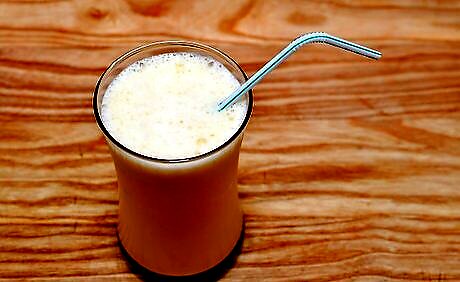
Serve the eggnog. Pour the eggnog into a glass and serve with a straw. This iced eggnog makes a delicious Christmastime treat when you're in the mood for something light and fresh. It's best to enjoy this eggnog shortly after making it since the eggs are still raw, but you will likely be able to store it in a sealed container in your refrigerator for a few days if there are leftovers. Discard the eggnog if it takes on a strange odor or texture, however.




















Comments
0 comment